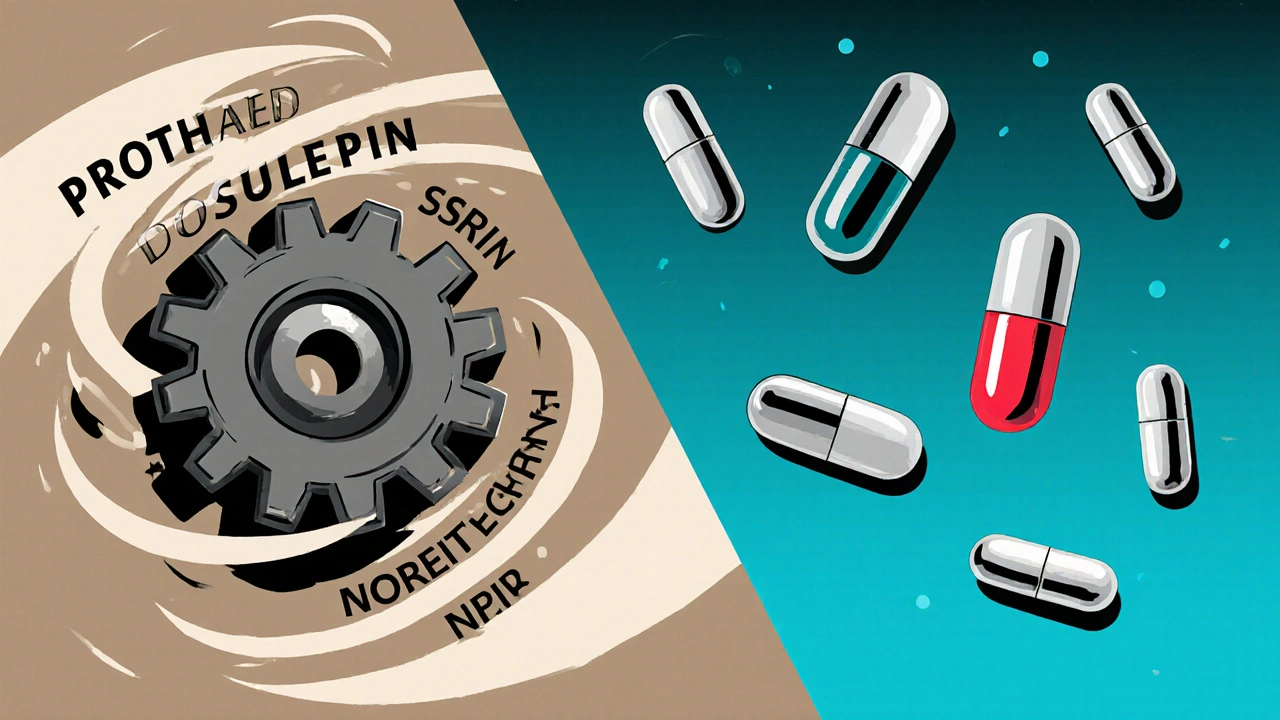Prothiaden: What It Is, How It Works, and What You Need to Know
When you hear Prothiaden, a tricyclic antidepressant containing the active ingredient dosulepin. Also known as dosulepin, it's been used for decades to treat depression, especially when other medications haven't worked. Unlike newer antidepressants, Prothiaden doesn’t just boost serotonin—it affects multiple brain chemicals at once, which can make it more effective for some people but also more likely to cause side effects.
Prothiaden is a type of tricyclic antidepressant, a class of drugs that block the reuptake of serotonin and norepinephrine. This means it helps keep these mood-regulating chemicals active in your brain longer. It’s often prescribed when SSRIs fail, or when someone has severe depression with physical symptoms like fatigue or pain. But it’s not for everyone. People with heart conditions, glaucoma, or a history of seizures are usually advised against it. And because it stays in your system for days, missing a dose or stopping suddenly can cause withdrawal—dizziness, nausea, even rebound anxiety.
One of the biggest risks with Prothiaden is how it interacts with other drugs. It can dangerously raise serotonin levels when taken with SSRIs, selective serotonin reuptake inhibitors like paroxetine or fluoxetine, leading to serotonin syndrome—a rare but life-threatening condition. It also interacts with blood thinners, like warfarin or NSAIDs such as ibuprofen, increasing bleeding risk. Even common cold medicines with dextromethorphan can become risky. That’s why knowing your full medication list matters more than ever when you’re on Prothiaden.
Side effects are common, especially at first: dry mouth, constipation, blurred vision, weight gain, and drowsiness. Some people feel more anxious before they feel better. It can take 2 to 6 weeks to notice any change, so patience is key. But if you’re struggling with severe depression, the wait might be worth it. Many users report feeling more emotionally stable after switching from SSRIs to Prothiaden—especially if they’ve had trouble sleeping or had physical pain along with their low mood.
What you’ll find in the posts below is a real-world look at how Prothiaden fits into the bigger picture of mental health treatment. You’ll see how it compares to other antidepressants, what to watch for when mixing it with other meds, and how to manage side effects without quitting. There’s also advice on what to do if it stops working, how to taper safely, and why some doctors still choose it despite newer options. This isn’t just theory—it’s what people actually experience, what doctors recommend, and what you need to ask before starting or stopping.
Compare Prothiaden (Dosulepin) with Alternatives: What Works Best for Depression and Anxiety
Compare Prothiaden (Dosulepin) with modern antidepressants like SSRIs, SNRIs, and mirtazapine to find the best fit for depression and anxiety treatment. Learn about effectiveness, side effects, and when to switch.
Read more
